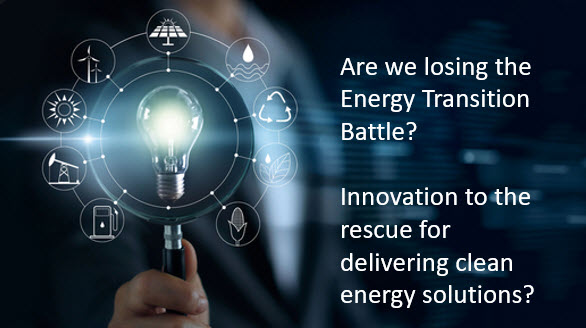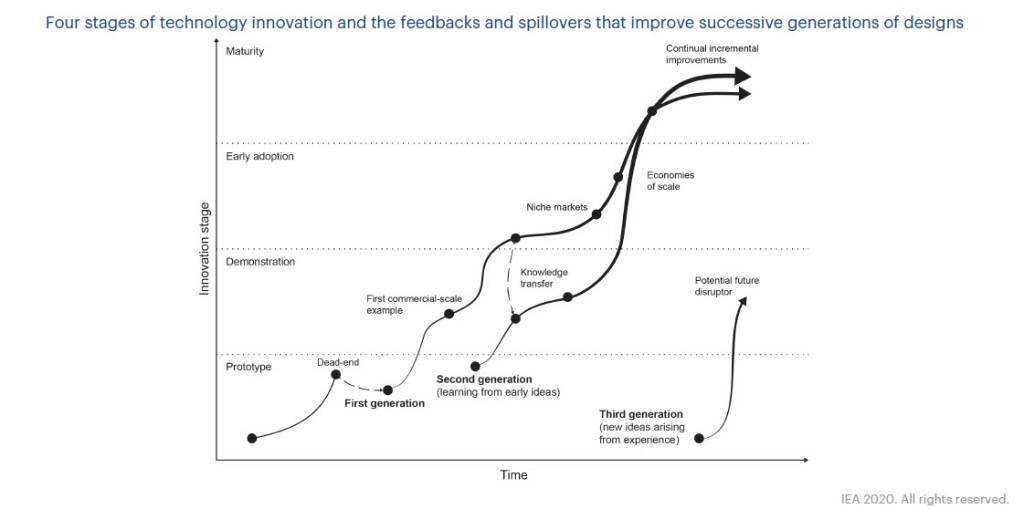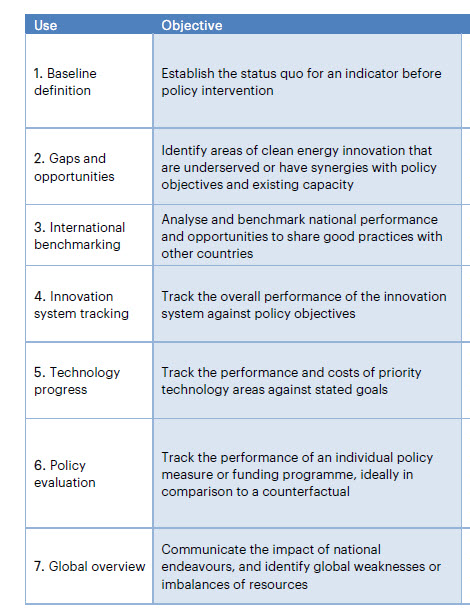 The growing fears are that we are falling behind the need to meet the Energy Transition required goals to the World has agreed to by 2050, set to meet the Paris Climate Agreement.
The growing fears are that we are falling behind the need to meet the Energy Transition required goals to the World has agreed to by 2050, set to meet the Paris Climate Agreement.
The climate is about to get really difficult to predict. We are facing some of the natural consequences of our present inability not to reduce greenhouse gases at the rate they are required. We as humans are the perpetrators of generating all these greenhouse gases, and global warming is ruining this one and only planet we have.
Each part of the world is pursuing its energy agenda, understandably so in many ways, but the shift from the dependence on fossil fuels and recognizing all future solutions should be clean energy.
Our environment is in such a significant crisis when you witness the changing weather patterns increasingly becoming unstable and unpredictable. Then we have the increased frequency and amount of flooding or drought many places in the world are facing, let alone the melting of our ice caps and arctic regions.
Our planet is under great stress.
I could also point out the impact we are having on all the living creatures that share this plant, on the habitat, our land, forests and our oceans. All are under great stress.
Something has to change and change as quickly as humanly possible. The urgency of speeding up the changes over from fossil fuels (oil, gas and coal) into our renewables of solar, wind, and water will never happen unless we innovate across the entire Energy System.
This current decade is essential. If we do not put in the building blocks and gain the real momentum and recognition of the challenges and needs to change, we will suffer the consequences in future years in deteriorating living conditions, unhealthy air, rapidly heating planêt causing disruptions to food supplies. To nature, to where and how we live.
There are no single or simple solutions to putting the world on a sustainable path to net-zero emissions.
“Reducing global CO2 emissions will require a broad range of different technologies working across all sectors of the economy in various combinations and applications. These technologies are at widely varying stages of development. Still, we can already map out how much they are likely to need to contribute to the emissions reductions necessary to meet international energy and climate goals”.(IEA opening remarks in a further report Energy Technology Perspective 2020 )
Innovation has been always suggested to be the required antidote to any crisis.
Increasingly I am focusing my time and energy on how Innovation can be the main force of change within this Energy Transition we are undertaking over the next ten to thirty years.
Building technology innovation is hard work; it goes through different innovation stages. We need to go through different generations of design solutions, learning from the past ones.

If we fail to achieve the really significant momentum over this decade, in the next ten years, then, to put it bluntly, we are stuffed, cooked, choking and burnt!
Can we wake up and recognize the urgency of this warming planet needs to be resolved in moving away from damaging carbonization into a rapidly decarbonizing one, where clean energy fueled from sustainable means of sun, wind and water replaces what we have.
The valuable work the IEA undertaking in tracking our clean innovation progress
There is one organization that is doing a really good job of tracking our progress on Energy technology innovation and the IEA provides a terrific tracking of how innovation is driving change. I want to give a short summary here.
The IEA’s Tracking Clean Energy Progress (TCEP) reports assess 46 critical energy technologies and sectors’ status and provide recommendations on how they can get ‘on track’ with the SDS.
SDS? The IEA’s Sustainable Development Scenario (SDS) offers a pathway for the global energy system to reach three strategic goals: the Paris Agreement’s well below 2°C climate goal, universal energy access and substantially reducing air pollution
Let’s pick up on these sectors and provide links to each critical aspect from their report of June 2020. Another one is due soon, but this gives an overview of what you need if you are curious about the progress we are making on these technology innovations positions.
Tracking Power which is not on track to meet the SDS goals
Unfortunately, recent trends are not on track with the SDS, which requires that power sector emissions fall an average 4% per year to 2030 and electricity emissions intensity drops 5.6% annually.
- Overview
- Renewable power
- Solar PV
- Onshore wind
- Offshore wind
- Hydropower
- Bioenergy power generation
- Concentrating solar power (CSP)
- Geothermal
- Ocean power
- Nuclear power
- Natural gas-fired power
- Coal-fired power
- CCUS in power
Tracking Fuel supply- Equally not on track
Considerably enhanced policy ambitions and regulatory efforts, better measurement and reporting, strong industry efforts and investor-led support are needed to meet SDS targets for 2040
Tracking Industry- more efforts needed
Greater energy efficiency, the uptake of renewable fuels, and research and deployment of low-carbon process routes, including CCS, are critical. Governments can accelerate progress by providing innovation funding and adopting mandatory CO2 emissions reduction and energy efficiency policies.
Tracking Energy Integration
Greater energy efficiency, the uptake of renewable fuels, and research and deployment of low-carbon process routes, including CCS, are critical. Governments can accelerate progress by providing innovation funding and adopting mandatory CO2 emissions reduction and energy efficiency policies.
Tracking Transport
Road vehicles – cars, trucks, buses and two- and three-wheelers – account for nearly three-quarters of transport CO2 emissions, and emissions from aviation and shipping continue to rise, highlighting the need for a greater international policy focus on these hard-to-abate subsectors.
- Overview
- Electric vehicles
- Rail
- Fuel consumption of cars and vans
- Trucks and buses
- Transport biofuels
- Aviation
- International shipping
Tracking Buildings
Enormous emissions reduction potential remains untapped due to the continued use of fossil fuel-based assets, a lack of effective energy-efficiency policies and insufficient investment in sustainable buildings.
- Overview
- Building envelopes
- Heating
- Heat pumps
- Cooling
- Lighting
- Appliances and equipment
- Data centres and data transmission networks
Direct Air Capture & CCUS
Direct air capture is a technology to capture CO2 from the atmosphere. The CO2 can be permanently stored in deep geological formations or used in the production of fuels, chemicals, building materials and other products containing CO2
CCUS is one of few technology options available to significantly reduce CO2 emissions in many industries, its deployment is woefully below the SDS level. . Greater investment in CO2 transport and storage infrastructure will also be critical.
THE IEA suggest seven possible uses for energy innovation indicators to drive energy policy

The conclusion comes from the five insights for building technology innovation into policy and future work to track and keep the focus on the critically important Clean Energy Innovation we need to develop, scale and implement.
- Innovation policy should be a core part of energy policy.
- There is no single indicator for tracking clean energy innovation progress.
- Strategies for tracking clean energy innovation are long-term commitments that evolve over time
- Policy evaluation remains underdeveloped, but embedding indicators in policy design can start to address this weakness.
- Innovation system mapping and best practice sharing are ways to get started quickly, especially for emerging economies.
Simply put, without a major acceleration in clean energy innovation, net-zero emissions targets will not be achievable. Our innovation processes need to be dramatically ramped up to enable a clean energy future within the timeframes we as a world have committed to and need.